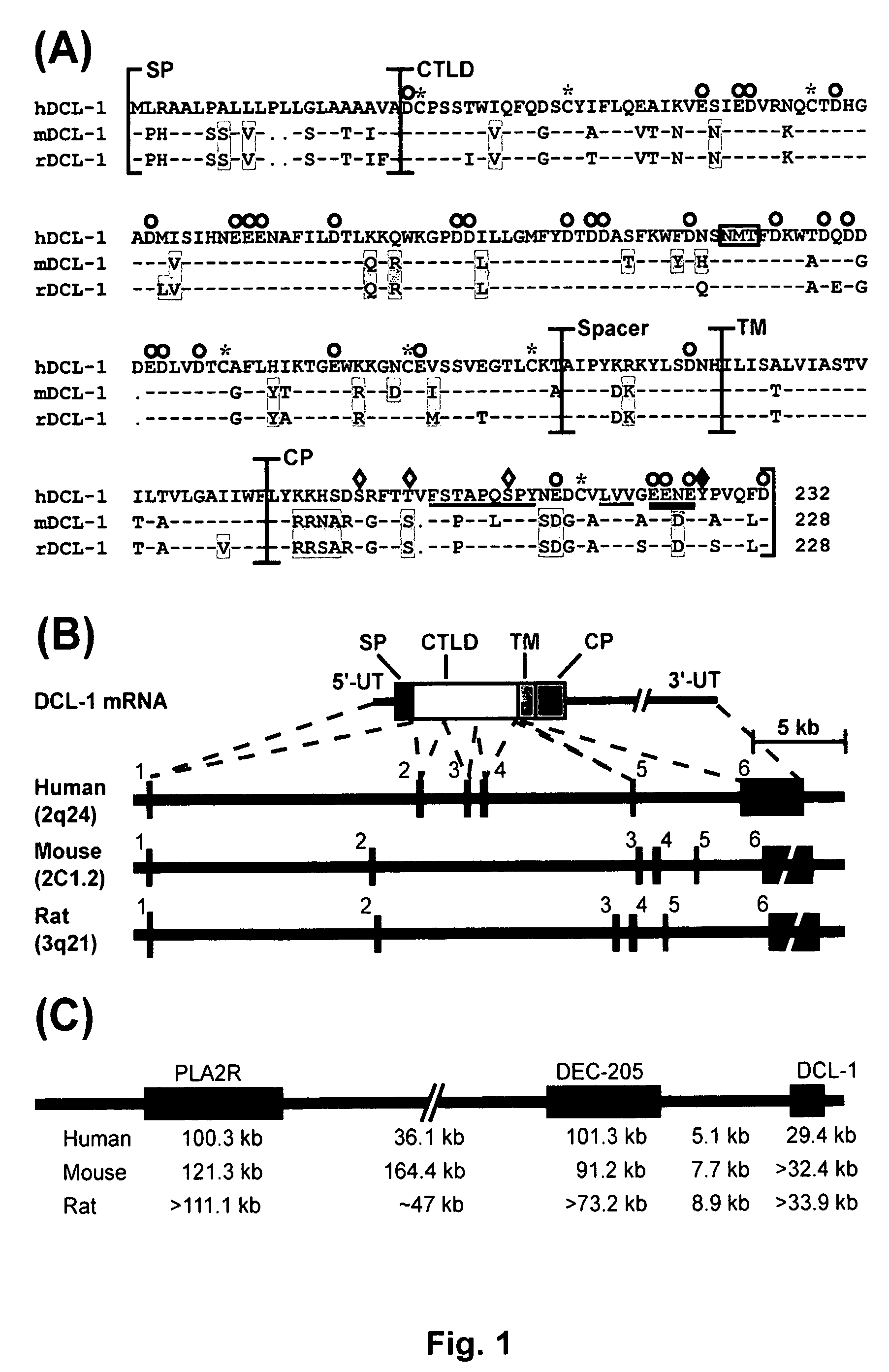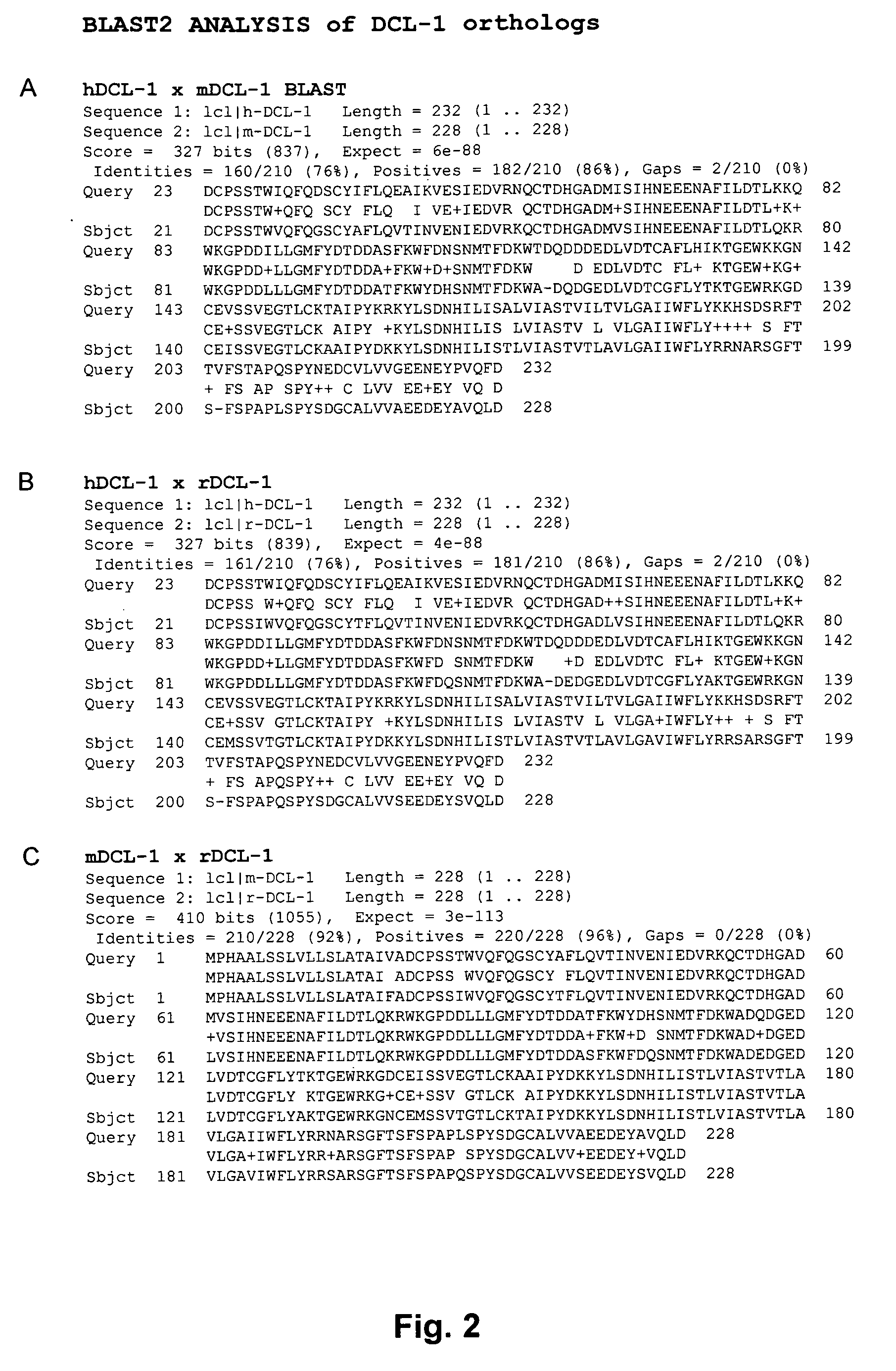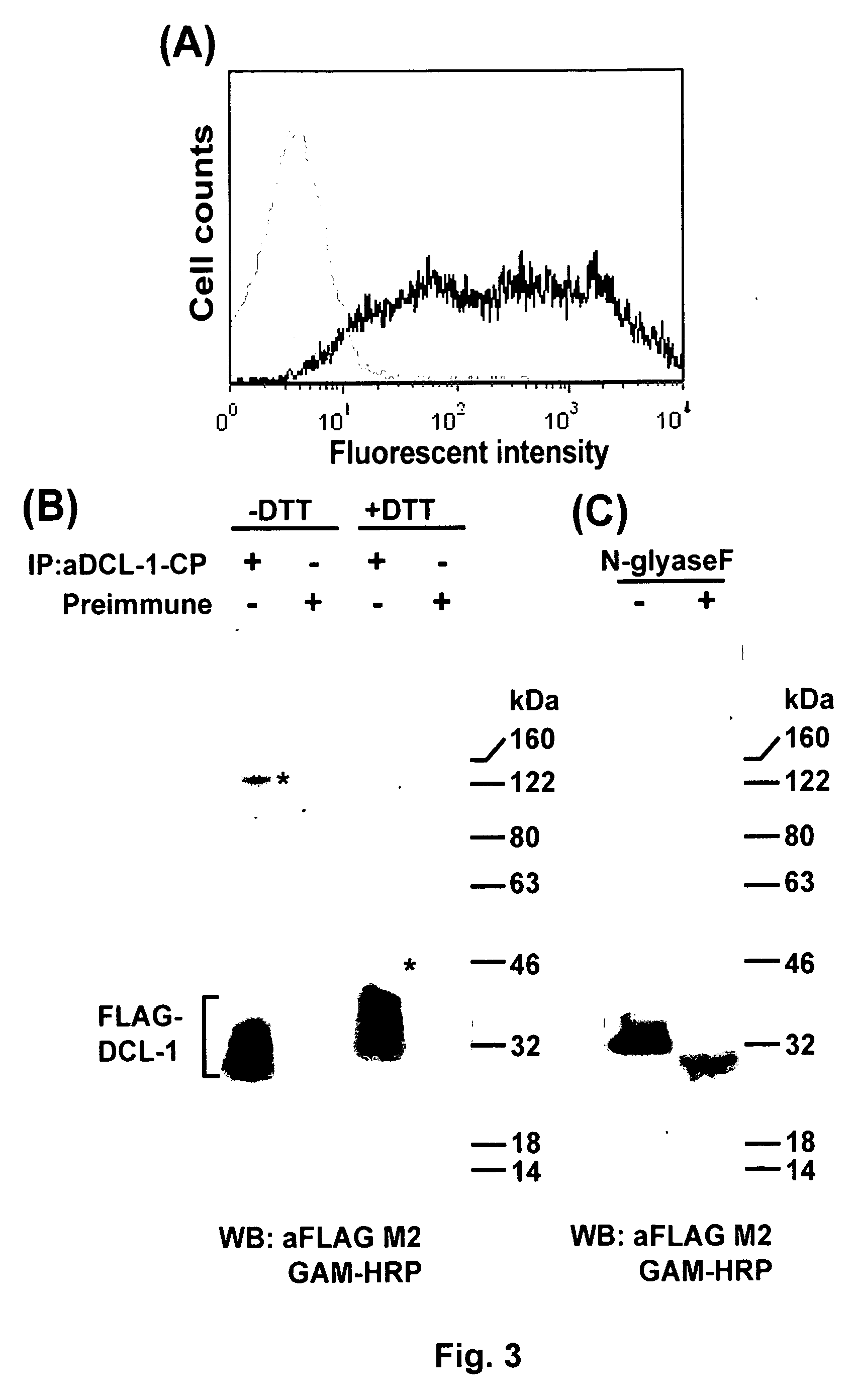DCL-1 and uses thereof
a technology of lectin and dcl-1, which is applied in the field of lectin of the new type i ctype, can solve the problems of poorly understood functions of these proteins and the inability to bind carbohydrate,
- Summary
- Abstract
- Description
- Claims
- Application Information
AI Technical Summary
Benefits of technology
Problems solved by technology
Method used
Image
Examples
example 1
Characterisation of DCL-1
[0223]As mentioned above, DCL-1 is a type I transmembrane C-type lectin receptor. It is also known as CD302. DCL-1 is the simplest type I transmembrane C-type lectin discovered so far: containing a SP, one C-type lectin-like domain (CTLD) and one short spacer, followed by one TM and one CP.
[0224]The amino acid comparison between human, mouse (GenBank Accession No. AK004267) and rat (GenBank Accession No. BC089829) DCL-1, indicated that DCL-1 was highly conserved (FIG. 1A and FIG. 2). The overall amino acid identity and similarity between hDCL-1 and the mouse or rat homologue was 76% and 81%, respectively. Mouse DCL-1 was nearly identical to rat DCL-1 (92% identity and 94% similarity).
[0225]In addition to six highly conserved cysteines for a typical C-type lectin motif, DCL-1 CTLD were rich in acidic amino acids (D and E), consisting of 21.5%, 19.4% and 18.6% and the predicted pIs were 4.14, 4.24 and 4.21 for human, mouse and rat DCL-1, respectively. One pote...
example 2
Purification of Leukocytes and Production of MoDC and Mph
[0227]Blood was obtained from volunteer donors and “inflamed” palataine tonsils were obtained at routine tonsillectomy with informed consent, as approved by the Mater Hospital Human Research Ethical Committee.
[0228]To isolate pure (>98% purity) T, B lymphocytes and NK cells with minimal contaminating cells, cells were first isolated using MACS (AutoMACS, Miltenyi Biotec, North Ryde, NSW, Australia) and then FACS using a FACSVantage (BD Bioscience, Sydney, NSW, Australia) as described previously (Kato, M., K. J. McDonald, S. Khan, I. L. Ross, S. Vuckovic, K. Chen, D. Munster, K. P. MacDonald, and D. N. Hart. 2006. Expression of human DEC-205 (CD205) multilectin receptor on leukocytes. Int Immunol. 18:857-869). T lymphocytes were CD3+CD11c−HLA-DR−. B lymphocytes were CD19+CD20+CD3−CD11c−. NK cells were CD3−CD14−CD19−CD20−CD34−CD11−HLA-DR−CD235a−CD16+CD56+. Monocytes were CD14+CD3−CD20−. Blood dendritic cell (BDC) subsets were CD...
example 3
hDCL-1 mRNA Expression Analysis
[0230]A commercial multiple tissue expression array (MTE Array, Clontech, Palo Alto, Calif.) was probed with [32P]dCTP-labelled 1.6 kbp hDCL-1 cDNA, produced by PCR using primers MK062 (GACCATGGAGCGGACATGATA: SEQ ID NO: 19) and MK0636 (GGCTCTACCATCTGGGTTTGT: SEQ ID NO: 20) on the pB30-1 plasmid DNA (28) as a template, by random priming (Rediprime II DNA labelling system, Amersham Bioscience, Castle Hill, NSW, Australia). The final washing condition was 0.1×SSC, 5% SDS at 55° C. The blot was quantitated by scintillation counting using a 32P cassette adaptor on a 1450 Microbeta scintillation counter (Wallac, Turku, Finland). Multiple tissue expression array analysis revealed that hDCL-1 mRNA was present in several different issues but at variable levels (FIG. 4A). Adult liver, lung, PBMC and spleen expressed hDCL-1 mRNA at relatively high levels, whereas neuronal tissues (e.g. brain and spinal cord), skeletal muscle and ovary had low levels. In the limit...
PUM
| Property | Measurement | Unit |
|---|---|---|
| Fraction | aaaaa | aaaaa |
| Fraction | aaaaa | aaaaa |
| Fraction | aaaaa | aaaaa |
Abstract
Description
Claims
Application Information
 Login to View More
Login to View More - R&D
- Intellectual Property
- Life Sciences
- Materials
- Tech Scout
- Unparalleled Data Quality
- Higher Quality Content
- 60% Fewer Hallucinations
Browse by: Latest US Patents, China's latest patents, Technical Efficacy Thesaurus, Application Domain, Technology Topic, Popular Technical Reports.
© 2025 PatSnap. All rights reserved.Legal|Privacy policy|Modern Slavery Act Transparency Statement|Sitemap|About US| Contact US: help@patsnap.com



